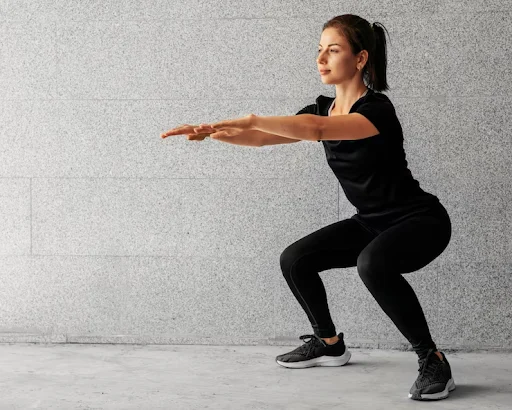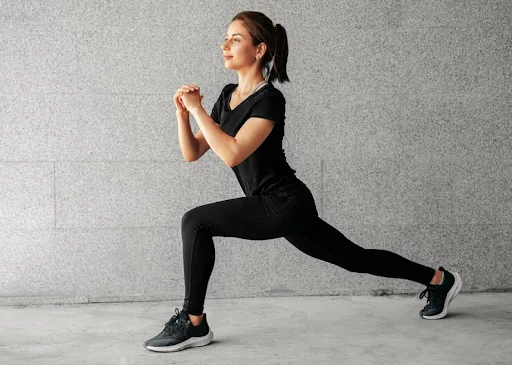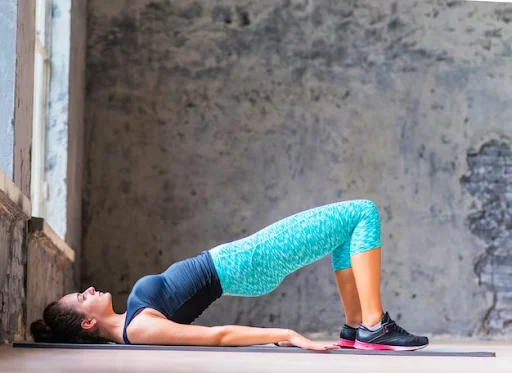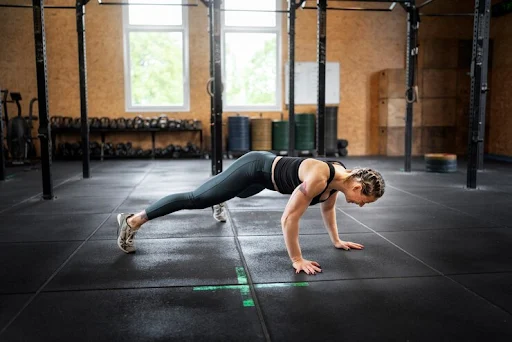Our bodies and minds change significantly as we age. Our muscles undergo atrophy, and our bones get weaker. The mind can be continuously trained by putting it to the test with puzzles and other mental exercises and bodies with physical exercise.
In terms of physical training, a lot of individuals just concentrate on lifting big weights and adhering to rigid exercise schedules and skip the most important factor in building strength- the muscle-mind connection.
This blog will examine the science underlying the relationship between our thoughts and our muscles during exercise, offer advice on how to best utilize this relationship, and present case studies of an accomplished athlete who has perfected the mind-muscle connection.
What is Muscle-Mind Connection, and Why is it Important?
Essentially, mind-muscle connection is the ability to intentionally use particular muscles when doing an exercise. This is directing your attention to the targeted area instead of merely performing the exercise or allowing your other muscles to perform the majority of the job. When used properly, MMC lowers your chance of injury, enables you to lift more weights, and improves your entire exercise performance.
Tips for Optimizing the Muscle-Mind Connection:
To harness the power of the muscle-mind connection for maximum results during workouts, consider implementing the following tips:
- Visualization and Positive Self-Talk: Spend some time mentally practicing the motions involved in any new exercise before starting. Imagine yourself carrying out each task with confidence and empowerment. Throughout your session, repeat encouraging statements while concentrating on your strengths rather than your weaknesses.
- Controlled Movements: Don’t just complete reps. Make sure every movement you make is controlled and focused. You can use the 2:1:2 method in which you engage the muscle for 2 seconds, hold it in that position for 1 second, and then slowly relax and bring it to the starting position in 2 seconds.
- Breath Control: We can have tremendous control over our muscles and minds through our breath. By consciously regulating your breathing during exercise, you can improve oxygen flow, which lowers stress and encourages relaxation. Prior to starting your workout, try some deep breathing exercises. Then, during the session, keep your breathing regular and steady.
- Focus and Mindfulness: Pay close attention to every second of your workout and block out distractions like outside noise or phone notifications. Being aware of your body’s reactions enables you to spot overtraining or approaching damage early on.
- Consistency and Progressive Overload: Strengthening, enhancing flexibility, and conditioning the body all depend on consistent exercise. The muscles are forced to adapt and expand as weight, repetitions, or intensity are gradually increased over time. Additionally, mixing things up in your workout keeps things interesting and avoids plateaus.
- Visual Feedback: Finally, incorporating visual feedback into your routines can significantly improve your overall performance. Visual feedback refers to watching yourself complete exercises either via video or mirrors. By observing your form, you become acutely aware of any areas requiring improvement, enabling you to make necessary corrections moving forward.
Real-Life Examples:
To further explain the effectiveness of these techniques, check out this inspiring example from a top-level athlete.
Serena Williams, the tennis champion, employs her mind-muscle connection during training sessions by concentrating intensely on each shot she hits. She once stated, “It’s about seeing the ball early… It’s really focusing your eyes and then everything else follows.” Her discipline and concentration translate directly onto the court during matches, allowing her to maintain unparalleled consistency even under immense pressure.
A Workout Routine That You Can Try at Home
Now, Let’s check out a simple home workout routine that you can include in your daily routine to build a better muscle-mind connection.
It is an easy-to-follow workout that does not require any equipment.
Bodyweight Squats (3 sets x 12 reps)

a. Stand with your feet shoulder-width apart and your toes pointing forward. Bend at the knees, push your hips back, and lower yourself as if you are sitting on a chair. Keep your chest up and your core engaged.
b. Push through your heels to stand up again. Repeat for 12 repetitions.
Easier Variation: If you think that bodyweight squats are hard for you, then you can try assisted squats or box squats, which are easier versions of bodyweight squats.
Lunges (3 sets x 10 reps per)

a. Start by standing straight with both hands on hips or holding weights in each hand. Take a large step forward with your right foot, keeping it parallel to the ground while bending both legs until they create a 90-degree angle with the front of the knee directly above your ankle.
b. Push off from your front heel and return to the start position. Alternate legs for 5 lunges per side.
Pushups (3 sets x 8-12 reps)

a. Begin in plank position, hands a little wider than shoulders, feet hip-distance apart. Lower your body towards the ground while keeping elbows close to your sides.
b. Engage your triceps and core muscles as you press yourself back up. Do 8-12 pushups.
Easier Variation: If regular pushups are challenging, then you can try Knee pushups
Glute Bridges (3 sets x 12 reps)

a. Lie flat on your back with your legs bent and your feet strongly planted on the ground. Your arms should rest comfortably alongside your body.
b. Press into your heels and lift your hips upward while squeezing your glutes tight. Hold at the top for 1 second before releasing slowly.
Plank Jacks (3 sets x 16 reps)

a. Assume a high plank position, engaging your abs and keeping your wrists directly below your shoulders. Jump your feet out wide, then jump them quickly back together.
b. Continue this jumping motion throughout the set. Aim for 16 repetitions.
Remember to start slow, focus on proper form, and gradually increase intensity over time. Consistency is key!
Final Thoughts
Making small changes like Visualization, Controlled Movements, Breath Control, Focus & Mindfulness, Consistency & Progressive Overload in your workout routine can improve the muscle-mind connection and lead to an overall improvement in both your physical and mental health. Remember, consistency is key; persistence in mastering these concepts leads to lasting improvements in your health.
